Greetings, Commanders and Warlords! Welcome to a new series of tactics articles based on Warhammer: Age of Sigmar. be sure to check the Tactics Corner for more great articles!
My name is Anvil, and over the past 6 months, I’ve played quite a few games with the new system and models. Slowly, with each successive battle and discussions with my opponents afterwards, I have developed and fine-tuned how to use my army and watched how my opponents used their armies to great effect. Before we get started, I want to quickly go over a few things about myself as well as a general overview of articles to come.
About me:
- Played Warhammer 40k for about 16 years
- Primarily a painter when it comes to the hobby, but I still play with a competitive attitude
- Started with a Stormcast Eternal army for Age of Sigmar
- Main army in 40k is Salamanders
Topics I Will Cover in Future Articles:
- General Tactics – Squeezing out every advantage of the actions you can choose in each phase as well as some of the rules they release in the future that can be used in any game
- Warscroll Tactics – Strengths and weaknesses of each unit and battalion in the game, as well as an overview of each army
- Scenario Strategies – How to plan for the different scenarios, along with occasionally designing custom ones for you to use in your games
- Battlefield Tactics – Covering the different Realms as they are released, as well as how to best use the different terrain pieces
I would like to note that these articles are written from the perspective of playing the game as it comes. We don’t use comp, no warscroll limits, no wounds count, no house rules (okay, we agree that you can’t have more than one named character, but that’s more of a fluff thing than anything else), etc. The reason why is because certain comps favor one unit or set of tactics over another, and to cover as many of them as possible, playing the game without such limitations will allow me to cover as many topics as I can to as many members in the audience as I can.
Alright, enough introductions. Let’s get to it. Today’s topic will cover Combat Roles. I feel that this is a solid starting point, assuming that you have read the rules and tried the game out a few times. It will give you some ideas to try out, a better grasp of how to use your armies in general, and help guide you into deciding how to expand your forces in the future.
Combat Roles
There are 5 combat roles that units fall into, most of them actually filling several roles:
- Support
- Tank
- Striker
- Flanking
- Tech
Support
The most common support units will be models with the Hero keyword. They have abilities that provide buffs for your units or debuffs to enemy units. Wizards are the most flexible, as their spells can affect any model in range and line of sight, and they have the default spells Mystic Ward and Arcane Bolt. However, they also are the most “difficult” to fire off, because you have to pass a Casting roll, and hope that your opponent cannot dispel it. Because of their flexibility, if you plan on having an army that takes many units from different factions, they are an ideal pick. Priests, on the other hand, are a midway-point between Wizards and Generals. They have abilities that often require a single die roll, but do not have to worry about enemy models cancelling them out. However, their buffs can only target units that have a certain keyword (for example, Lord-Relictors can only pray for a Healing Storm on a Stormcast Eternal model). Generals, finally, tend to have Command Abilities that affect multiple units at once. Unlike Wizards or Priests, they just activate, with no dice rolling needed, making them very powerful and reliable. However, besides the Inspiring Presence Command Ability, they can only affect units that have a certain keyword, just like Priest buffs.
Choosing targets for your Support units’ abilities is often easy to determine. But the problem that I catch a lot of players making (including myself) is positioning. Most abilities trigger in the Hero phase, which takes place before the Movement phase. During your Movement and Charge phases, you have to be aware of where your Support unit is going to be and the range of their abilities, as well as the units they want to assist. As an opponent, what you want to try to do is remove the Support units, draw out their other units away from the Support (provide a tempting Charge target), or force the opponent to make a choice between one target or another, and then attack the unit that seems most vulnerable after the choice. If you are about to charge a unit, be aware of whether or not a Support is within range of using their abilities to assist them. If you are confident that you can wipe them out, then that leaves their Support extremely vulnerable, especially if you get back-to-back turns.
Tank
Tank units, as most would assume, are units that can tie up enemy models and slow them down by being very durable. Aspects that indicate tanking units are good armor saves, high wound values, abilities that benefit from a large number of models, high bravery, and abilities that make damaging them harder, like shields or regeneration. Often times, though, they can be slow or have low damage output. So for that reason, you want to position them to be in close proximity of your Heroes and your slower-moving Striker units. Some of them have abilities that allow them to behave as bodyguards, like Protectors reducing ranged To Hit rolls against them or any unit that would be behind them, or the Saurus Eternity Warden taking a Wound for a Slann on a 2+.
So what can you do with Tanks? The obvious answer would be to use them as chaff, slowing down enemy Strikers so that your other units can perform their duties unhindered. Another tactic, one that has proven very reliable for me, is to perform a “Swap”. Suppose I have a unit of Retributors (Strikers) moving up the field to try to take out something big, like a Hydra. My opponent catches me off-guard, and assaults them with a large unit of Sisters of the Slaughter. I really can’t be tied up for another turn, so during my next movement phase, I perform a Run with the Retributors, moving them out of combat. Then, a nearby unit of Liberators with shields, in that same phase, move in close, putting themselves between the Retributors and the Sisters. If I succeed on the charge, then they are tied up in close combat, and won’t be able to charge my Retributors next turn, thus the “Swap”. If I don’t succeed on the charge, then at least I have something between their unit and mine to slow them down enough to probably not perform a charge. Often, they will be one of the last units to perform their melee attacks in combat, as everyone else is more vulnerable to damage, and need to perform their attacks first to maximize their effectiveness. Knowing when to perform a Charge and when to just place them between your enemy and your own units is key, and depends on the situation. Remember that if a unit is in close combat, and they move out of it, they cannot perform a charge, so use that to your advantage.
Strikers
The heavy hitters, the assassins, the combat monsters. Their job is to kill and nobody else can do it better. Look for weapons that have a high number of attacks, good To Hit and To Wound rolls, rending, weapon range, and high Damage values, along with abilities that inflict mortal wounds or increase your offensive abilities in general. Ideally, with Strikers, you want to perform the charge with them, making them strike before your opponent can retaliate. Dead models don’t fight back.
Strikers are the most straightforward to use: point them at something you want dead and let ‘em rip. However, they tend to be quite vulnerable to enemy attacks, so they will need the most support from the rest of your army. Flanking units to provide additional attacks and bodies to assist them in combat, Tanks to hold off other units from tying them up, and Support to maximize their deadliness. There are some things that you can do with your Strikers that will keep them alive long enough in case they cannot be assisted. Moving through terrain and cover will add +1 to their saving throws. If an enemy were to charge them while they were in cover, then the enemy will not benefit from the terrain, but you will, giving you one turn to put as much hurt on as possible while being more durable than out in the open. Another way to inflict damage without taking a lot yourself is to charge from the flank. Facing an enemy front to front will be a contest of who can roll better, but charging from their flank, i.e. where their units are thinnest, will allow most of your unit to attack while they can only retaliate with half of their models or even less. The weight of dice will be in your favor.
Another thing to consider when using Strikers is what buffs to give them. Buffs are always good, but some buffs are better than others, depending on the unit. For example, let’s compare Retributors with Protectors. Retributors inflict 2 mortal wounds with their attacks if they roll a 6 or better To Hit, while Protectors change their Damage value to a D6 against Monsters on a To Wound roll of 6 or better. Using a Lord-Celestant’s command ability to add +1 to their To Hit rolls, both units benefit, but Retributors benefit more, as now they inflict 2 mortal wounds on a 5 or 6.
Flanking
In a lot of scenarios, you are on a time limit to complete the objective. Sometimes your Strikers and Tanks will thin out the enemy, but won’t make it to the objective in time, or they need assistance in combat when no one else is around. Perhaps your opponent is keeping a key Wizard or Hero away from the fight, safe in the corner. That’s when Flanking units come into play. High movement speed, teleporting, flying, and abilities that allow them to run without preventing them from charging or to increase their chance to succeed on a Charge are what you look for. Their job in battle is to provide temporary assistance to units in your army when no one else is close enough to fill that role. Your general is about to be assaulted by an enemy unit and your Tanks aren’t close enough? Dash your Flanking unit over to them to provide bodies and attacks to keep them alive. Your Strikers need a few additional hits to wipe an enemy out or are going to be swarmed by a horde? Get your Flanking units into combat alongside them to get those additional attacks in and to prevent them from being wrapped around, allowing the Strikers a chance to escape. Fragile Wizard in a corner firing off spells? Your Flanking units should be strong enough to take them down by themselves.
Flanking units are probably the trickiest to use properly, as the benefits they provide are very indirect and the least involved with numbers and dice rolls. If used incorrectly, they die a horrible, horrible death with no impact to the battle, and even leave the rest of your army very vulnerable. But if used properly, they can change the outcome in your favor in one or two key plays. One of their best uses is to counter Summoners (I will cover them in a future article) or units that “deep strike”. Almost every Summon spell (I actually cannot think of an example where this is not true) requires that the unit summoned must be placed within 9” of the Summoner and 9” away from enemy models. So already they are limited on space, but when you factor in that most of the time, those Summoners are near a board edge or placed somewhere that doesn’t allow much maneuverability (like a tower), it restricts their space drastically. Your Flanking units can move themselves quickly to an empty space on the board near the Summoner, forcing them to either summon the desired unit in a bad position, or not even be able to cast it at all. “Deep Strike” units, like the Celestant-Prime or units with the Lightning Strike ability, also need to be a certain number of inches away from enemy units, and so holding your Flankers in your back field until they are needed will prevent them from ambushing your Support and ranged units. Just make sure that you leave enough space for them to move and that they’re not too far out of reach of your other units.
Tech
Abilities are what define whether or not a unit fits the Tech role. These models give you a huge edge over enemy units that fit certain criteria, whether it’s based on keywords or make certain attacks better depending on distance to their targets or how many models are within range. They are your hard counters, and should be used as such. Two good examples would be Lord-Castellants and Decimators. Lord-Castellants have an ability that can target units with the Chaos keyword, dealing D3 mortal wounds at a distance, which not only can cause them to lose models to damage, but also increases their chances of failing Bravery tests. The Decimators, on the other hand, don’t have an ability that gives them an advantage against certain keywords, but they do perform a number of attacks equal to the how many models are within 2” of them, and add 2 to the result of Battleshock tests to enemy units within 6”. These two abilities make them ideal Tech against hordes consisting of small models, inflicting a lot of damage to them and negating some of the Bravery bonus they would get from every 10 models in the unit.
Tech has a lot of variety, and cannot be covered broadly. In the future, when I write articles on tactics with different warscrolls, I’ll cover Tech units more in depth.
Conclusion
Understanding a unit’s primary role is key to using your army effectively. Stats are important in a warscroll, but abilities are a bigger factor when it comes to identifying which roles they fit. While I have covered the basics of how each one should be used, one thing to keep in mind is that roles change as the battle progresses and from one scenario to another. Battalion Warscrolls can even change a unit’s role from one to another. A good example of this would be the Host Azyric (I chose this battalion because it’s a free one to look at). While the Celestant-Prime is a Flanking Striker unit, the warscroll also turns him into a Support, allowing him to deploy units from the warscroll onto the battlefield, which in turn also causes them to be Flanking units themselves. Now you have to choose whether or not to use him mostly for Flanking, Striking, or Support, and sometimes it will change depending on the objective.
That’s it for today. I hope you enjoyed this article and that there’s something you can take away from it to use in future games!
Next Time on Anvil of War: Building an Army

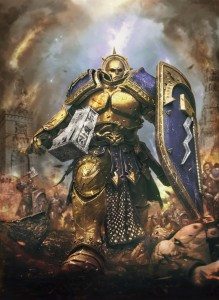
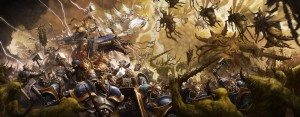
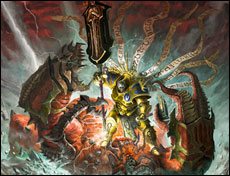
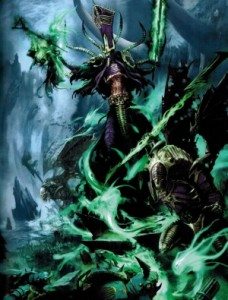

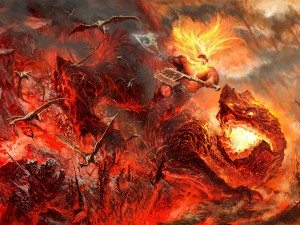
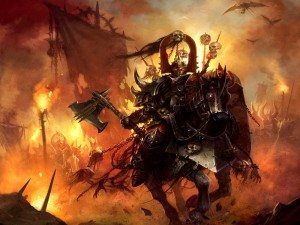

Great article, Anvil! You really do a good job of breaking down some of the tactics of the game and brought to light some I had not considered. Makes me want to play again!
I agree. Great article! Really excited about your series! And I’ve added it to Strategy & Tactics in the AoS Directory: https://docs.google.com/document/d/1Ux_Bppx8ISJ5keNdMEv8djk0r8N5SLYDO7Zi7fuJy2k/edit
Nice one!
Nice – look forward to more AoS articles! The more I play the more I turn my wheels on how to get the most out of this unit or that one, so look forward to what else you can put out here. G
So what are tournament format for AoS? nice read but I have no clue what all that mean.
Great article! I have been in love with AoS and really enjoying the new game. Playing with Clash comp mostly and I highly recommend it. Would love to see an ITC pack similar to Clashes Comp and pool system pack!
Thank you thank you thank you!! Awesome to see some Fantasy love on frontline and to be able to read some well written positive articles about it. I got into fantasy at AoS so I don’t have the bias that I understand old world players do and with the internet crowded with them sometimes it is disheartening. I myself chose skaven and also using my daemons from 40k and so far I’m loving it. It’s a nice side game from 40k and adds variety to my models. Excited for the future articles! Keep up the outstanding work!
Great article! Having played only a hanful of AoS games (which I though were great btw), it’s nice to see the strategic potential of the system explored. As a long-time Magic the Gathering player, I can relate to the combat roles you outline and hope that GW continue in this direction. Synergy and comboing are some of the most satisfying aspects of gameplay for me, and this is taken to a new level when you factor in positioning and generalship on the tabletop too. I look forward to reading more from you.
The summon hounds from wanderers has as only limitation that it needs to be within 8″ of the caster and that it cannot move in the move phase… nothing says you cannot summon it next to the enemy… which means that if the enemy didn’t make their charge you can summon the hound next to them forcing them to either flee or attack the hound (and wasting their attacks).